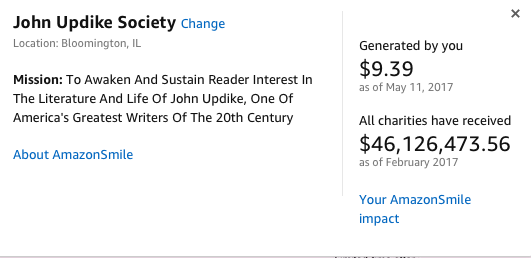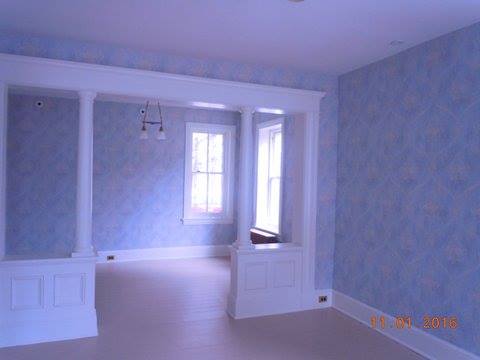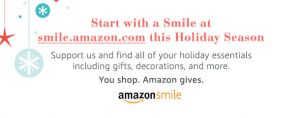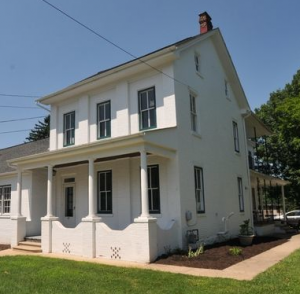Roemer and Constance McPhee, whose support helped The John Updike Society to go all out and hire a historic restoration specialist to bring The John Updike Childhood Home in Shillington, Pa. back to the way it was when Updike lived there from “age zero to 13,” have received the society’s Distinguished Service Award.
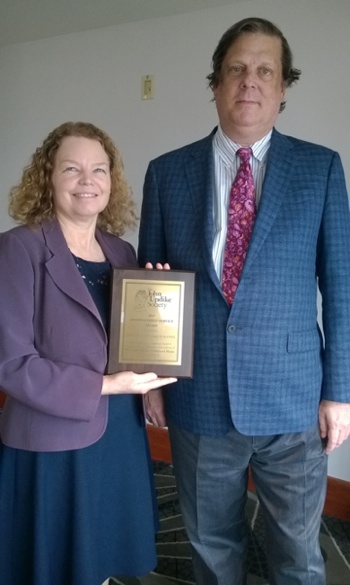 In presenting the award at the society’s business meeting on Thursday, May 25, at the Westin Copley Place Hotel in Boston, society president James Plath recalled a phone call he received in December 2012 from “a man named Roemer McPhee, who told me he’d read about our efforts to turn The John Updike Childhood Home into a museum and wanted to help by sending us a check for $3000.” McPhee was a big John Updike fan and thought it was a perfect opportunity to give the writer his due.
In presenting the award at the society’s business meeting on Thursday, May 25, at the Westin Copley Place Hotel in Boston, society president James Plath recalled a phone call he received in December 2012 from “a man named Roemer McPhee, who told me he’d read about our efforts to turn The John Updike Childhood Home into a museum and wanted to help by sending us a check for $3000.” McPhee was a big John Updike fan and thought it was a perfect opportunity to give the writer his due.
Since that first donation, H. Roemer McPhee III—an author himself (The Boomer’s Guide to Story: A Search for Insight in Literature and Film) and a New York investor who studied at Princeton and the Wharton Graduate School of Business—has demonstrated his love of Updike by driving to Shillington to tour the house and Updike sites with his mother and later attended the Third Biennial John Updike Society Conference in Reading, Pa. with his wife and co-benefactor, Connie. Through their PECO Foundation, Roemer and Connie have contributed more than $70,000 over the years to help with the restoration, making them the second largest donor, behind the Robert and Adele Schiff Family Foundation, whose initial donation enabled the society to purchase the home. With some work still outstanding and museum display cases needed, the McPhees have also pledged additional help and said they are considering joining society members in Belgrade, Serbia for the Fifth Biennial John Updike Society Conference in June 2018.
“It’s fairly common to find foundations that care enough about a cause to donate money,” Plath said, “but to have the people behind those organizations also become involved on a personal level and to be so knowledgeable about Updike that they can discuss texts such as the Rabbit novels with members, that’s highly unusual, and it underscores the impact that Updike had as a writer.”
Because of their shared love of John Updike and his works, and because of the passion they’ve shown and the impact they’ve had in helping the society to fulfill its mission, the board of directors of The John Updike Society unanimously voted to award Roemer and Constance McPhee the society’s Distinguished Service Award, Plath said.
Over the nine years that The John Updike Society has been in existence, the society has given Distinguished Service Awards to James Yerkes, for his important contributions to Updike scholarship through The Centaurian print and online newsletter; Conrad Vanino, whose pro bono work as realtor helped the society acquire The John Updike Childhood Home and who continues to act as the society’s agent; and The Robert and Adele Schiff Family Foundation, whose generous support enabled the purchase and restoration of The John Updike Childhood Home.
Roemer McPhee’s most recent book is Killing the Market: Legendary Investor Robert W. Wilson.

